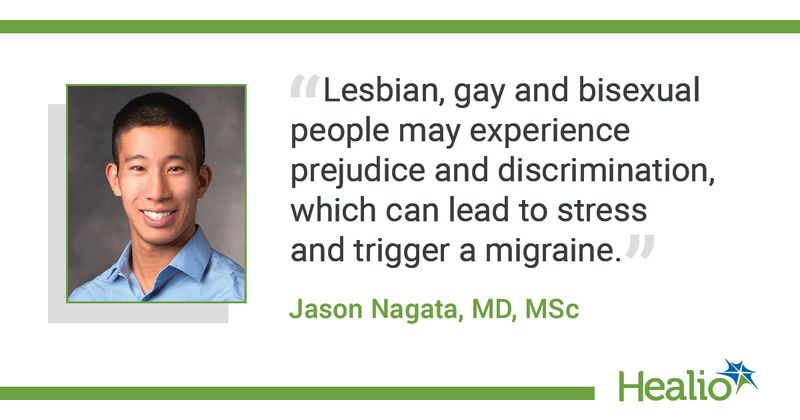Adults in LGBTQ community may be at higher risk for migraine
Adults who are gay, lesbian or bisexual, or identify as “mostly heterosexual” were more likely to experience migraine than heterosexual adults, according to research published in JAMA Neurology.
“Although prior research has identified disparities in migraine by race and sex, little was previously known about disparities in migraine by sexual orientation,” Jason Nagata, MD, MSc, assistant professor in the division of adolescent and young adult medicine at the University of California, San Francisco, told Healio Primary Care.

Nagata and colleagues evaluated cross-sectional, nationally representative data from the Wave V (2016-2018) National Longitudinal Study of Adolescent to Adult Health, also known as Add Health. In the survey, participants answered a question that was consistent with diagnostic criteria for migraine without aura.
A total of 9,894 adults with a mean age of 37.2 years were included in the study. Of those, 85.8% were exclusively heterosexual, 10% were mostly heterosexual but somewhat attracted to people of the same sex and 4.2% were lesbian, gay or bisexual.
Using weighted data to reflect the representative proportion of each group in the U.S. population, Nagata and colleagues determined that those who were not exclusively heterosexual had a higher prevalence of migraine. They found that 30.3% of those who were mostly heterosexual and 30.7% of lesbian, gay or bisexual participants had migraine, compared with 19.4% of those who were heterosexual.
Compared with exclusively heterosexual patients, researchers identified higher odds for migraine in those who were mostly heterosexual (adjusted OR = 1.35; 95% CI, 1.10-1.65) and in participants who were lesbian, gay or bisexual (adjusted OR = 1.58; 95% CI, 1.17-2.14). Similar results were observed in sex-stratified models.
Nagata said multiple factors could be contributing to higher odds of migraine among those who do not identify as heterosexual.
“Lesbian, gay and bisexual people may experience prejudice and discrimination, which can lead to stress and trigger a migraine,” he said. “They may also face barriers to accessing health care, which can lead to worsened health.”
He said future research should evaluate specific factors that lead to higher migraine risk in lesbian, gay and bisexual people, and identify other conditions that could disproportionately affect these patients.
“Health care providers should create an inclusive, welcoming and safe environment for sexual and gender minority patients so they are not discouraged from seeking health care,” Nagata said. “This could include providing posters, brochures, or educational materials about LGBTQ+ health concerns, posting a non-discrimination statement and customizing patient intake forms to be inclusive of all genders and sexual orientations.”

